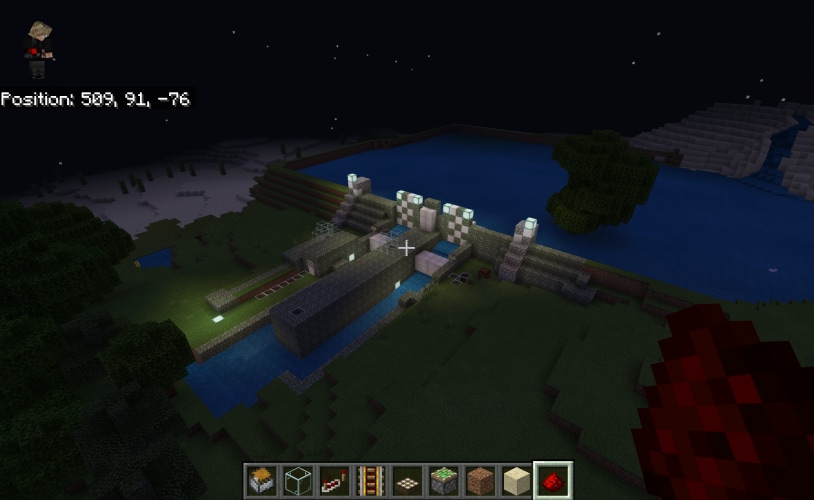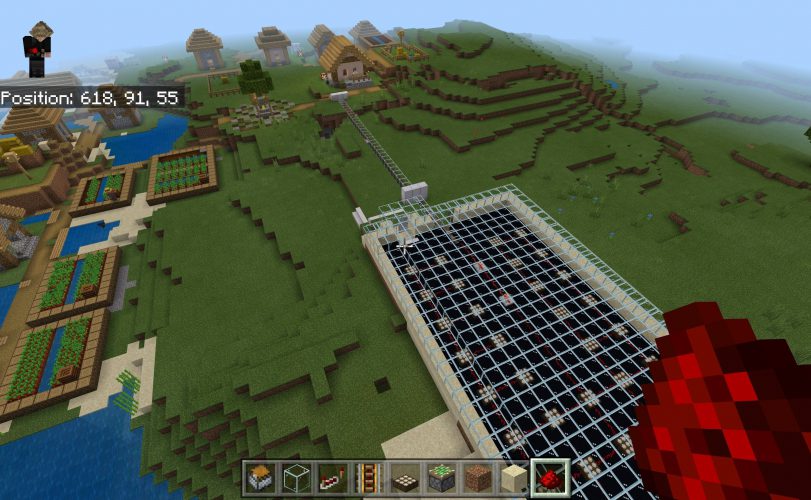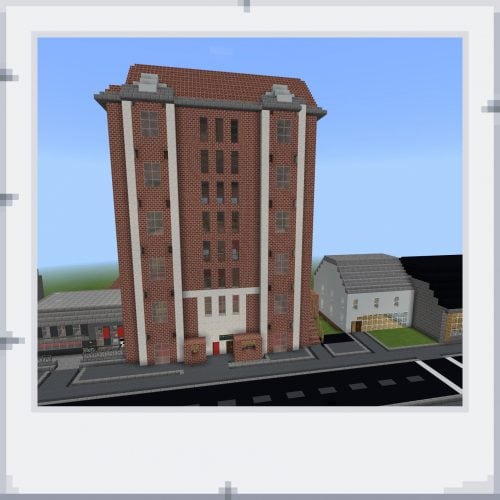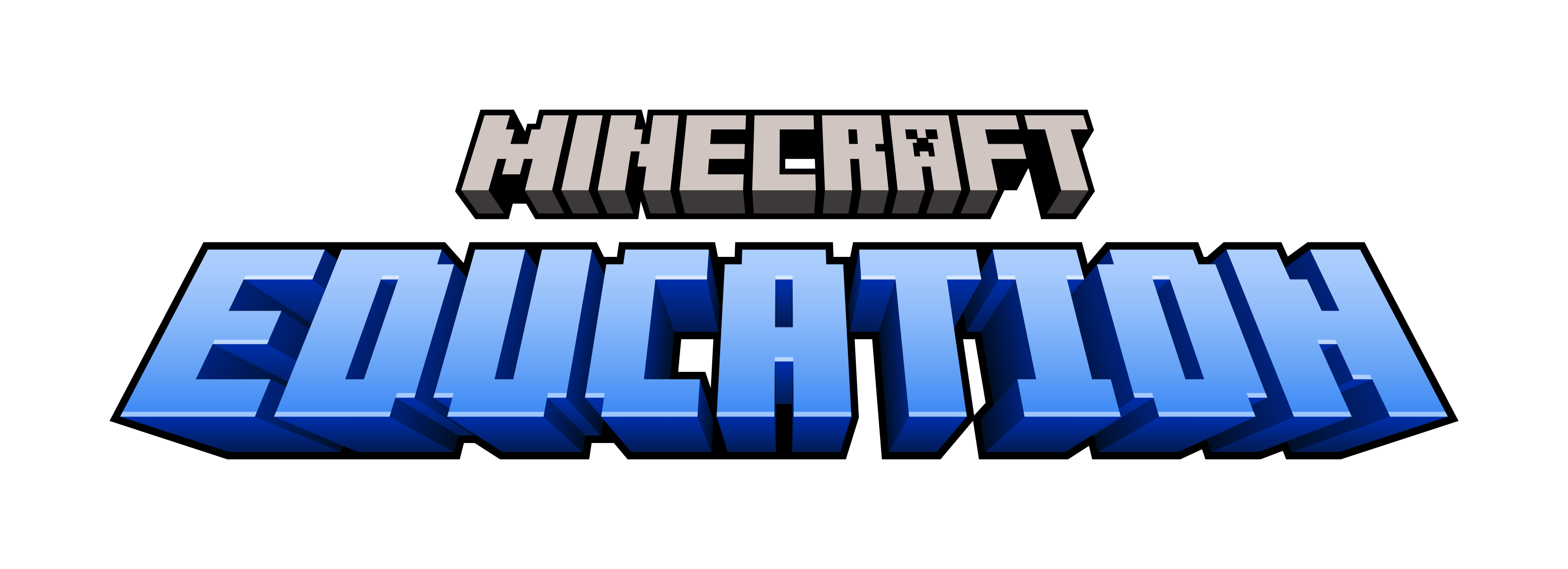Minecraft Learning Centers in Wales

In 2019, The Welsh Government made the choice to provide more than 460,000 students with Office 365 Education through the country’s Hwb Learning Platform. As part of this powerful suite of learning tools, Minecraft: Education Edition became available to all students and educators across the country. To help with implementation, the Welsh Department of Education and Skills came up with a bold plan. They selected five schools that they knew would be excited to embed this new learning tool into their curriculum and help others get started on their own journeys, and established them as Minecraft Learning Centers so they could spread their expertise to educators across the country.
We asked educators at the Learning Centers to share their experience of starting out with Minecraft in the classroom, receiving advanced training to support other teachers, implementing trainings in spite of school closures in the spring of 2020, and the outcomes they saw for teachers and students. Read stories from these innovative educators and see what’s possible for your school or district!
Ysgol Ardudwy: Getting started with Minecraft: Education Edition Against the Backdrop of Wales
Elfyn Anwyl shares how his school got started with Minecraft in the classroom as a response to Wales’ Digital Competency Framework. A connection between play and pedagogy made them fantastic candidates for the Minecraft Learning Center program.
The Digital Competency Framework (DCF) was first launched in September 2016 in Wales. Finding a variety of “digital-rich skills” projects was a challenge at first, mainly due to the limitations of the software available. Minecraft: Education Edition seamlessly addressed so many of the strands in the DCF that it convinced me there was mileage in using it in the classroom.

I challenged myself to come up with projects that would develop the learner’s digital skills, communication skills, and skills that were truly cross-curricular and also lined up with the DCF. In our hometown, we have a historic castle built over 800 hundred years ago that sits on a rock looking down at the school. My first project was born: re-create Harlech Castle using Minecraft: Education Edition.
Through a combination of using Office 365 to plan the build by collaborating in Word and Excel Online, the learners researched how the castle was built, which materials where used, the original layout of the castle, and much more. The learners were developing knowledge of local history and collaboratively creating one research document in groups of 3 or 4 using Word Online. The next phase of this project was planning out the build using Excel Online to create one planning document. During the build, learners had to use the Agent to build some parts of the Castle, which would aid the development of their computational thinking and coding skills.
As I was observing the learners, I realized the wealth of other skills that were being developed. High-order thinking was constantly being used because the learners would often be planning two or three steps ahead. Decision-making skills are a crucial part of building anything in Minecraft: Education Edition. Decisions about blocks and materials are made all the time, but these decisions also had to be communicated within the group. Learners also developed their problem-solving skills. As with any practical build, mistakes are made, and they need to be rectified.
This quote from IDEO – Design Thinking For Educators says it all: “If we want to change education and learning to make it more relevant, more effective, and more enjoyable for all involved, teachers need to be the entrepreneurial designers and redesigners of the ‘systems’ of schools and of the schools themselves.”
Minecraft: Education Edition allows educators to do this. It allows us to create engaging projects, tasks, and assignments for learners, which are relevant, more effective, and more enjoyable. In turn, learners are proud of their accomplishments. They’re so keen to show you their work and take on feedback.
Risca Minecraft Club: Establishing a Minecraft Teaching Practice
At Risca Community Comprehensive School, Coran Jones and Barri Mock pioneered a Minecraft club that has consistently driven engagement and produced incredible builds. This creative use of students’ free time was a significant proof-point in establishing country-wide use of Minecraft: Education Edition. Coran shares their story.
We began our Minecraft: Education Edition journey by setting up an after-school enrichment club: Clwb Minecraft Rhisga. As the school bell rang at 3:15, we were pleasantly surprised to see a good number of learners at the door! They ranged from year 7 to year 9 and were a mix of boys and girls. We were initially quite surprised, but it was important for us to remember that the students are the experts, and they were always going to know more than us.

We set them their first build challenge, Gardd Cymru (Garden of Wales). We wanted to know what Wales looked like to them, what being Welsh means to them. They took the lead and divided themselves into groups, and straightaway you could see the ideas, creativity, and knowledge bursting out! We had learners naturally stepping into the team manager roles, researchers, builders, and more. We stood back and watched their ideas come to life through Minecraft: Education Edition, and it was clear they were fully engaged in creating and exploring their thinking.
It wasn’t until the following week that we realized just how powerful this educational tool was. Whilst sitting in my classroom at break time, there was a knock at the door. It was a learner from the club who is usually very quiet and reserved. “Miss, do you mind if I take some pictures of your classroom?” Initially, I was a little confused until he explained he was conducting research for his Gardd Cymru build. They had decided independently to recreate their school in Minecraft: Education Edition and were doing research!
A turning point for us as educators was when we implemented the use of an adventure challenge. The resource about refugees was created by Immersive Minds, and rather than showing learners videos and articles about the topic, they were able to live the life of a refugee through Minecraft: Education Edition. As they explored the world—excited by the fact that we had allowed them to change the settings to “Survival” mode—we could see them attempt each task with caution. They were instantly immersed in the world and the issues faced by refugees. The learners were asked to make decisions that their Minecraft characters’ lives depended on, from boarding tiny boats in the hope that they would arrive in a safer country to trading their treasured belongings for food to survive. These decisions added to the experience and helped them to see things in the real world from a different perspective.
As a school, we have now created a new group of student leaders: the Risca Minecraft Digital Leaders. We’ve witnessed first-hand how Minecraft: Education Edition not only engages learners in tasks and lessons but has encouraged students to showcase their ideas, even becoming more vocal in exploring their thinking. We awarded two learners with the first “Minecraft Digital Leader Badges,” because in the short time we had been using the tool within the classroom, we witnessed them grow in confidence whilst improving their literacy and numeracy skills in a different way.

Sometimes staying after school can be the last thing you want to do after you’ve had a tough day teaching, but Clwb Minecraft really does have the power to lift your spirits and unlock creativity. We are constantly learning new things from our students, and we’ve found ourselves sitting for hours after the sessions, reflecting on the thoughts and amazing ideas of the students and the huge potential for enhancing learning experiences. We’ve always focused on educational goals in spite of the fact that the club takes place after school. This has not put the learners off in any way, and we now have year 10 pupils attending the club to work on their coding skills with the help of the Code Builder feature and developing new strands of the Digital Competency Framework such as computational thinking.
Pontlliw Primary: From Teachers to Trainers
With teachers across Wales building practices with Minecraft: Education Edition from scratch, the next step was to take advanced training so they could teach their fellow educators how to implement the game at schools around the country. Matthew Stonham and Catrin Jones from Pontlliw Primary School were both novices when they started with Minecraft, but their experience at the train-the-trainer workshop in Cardiff gave them the confidence to become Minecraft leaders in their peer communities. Matthew tells their story.
Day one in Cardiff at the Train the Trainer workshop: our early attempts at getting to grips with the game were stuttered at best. How were we ever going to be able to teach others to implement Minecraft: Education Edition in their classrooms if we were novices ourselves? However, as the day went on, we both became more fluent with the game and actually started to enjoy the building process. We left day one far more confident about our understanding of the game, but we were still skeptical about how we could shoehorn this into our current curriculum. Then came day two…
We were given the challenge to recreate a scene from our favourite childhood novel. The rest, as they say, is history. We were hooked! I chose the caravan from Danny the Champion of the World, and Catrin chose Hogwarts from Harry Potter. There was complete silence in the room for over 45 minutes as everybody eagerly set out to create a “work of art.” After being prised away from our laptops, the trainer Sarah explained that we had completed a book review—our own take on a setting from the text we had read!
Were our builds timeless works of art? Absolutely not! However, we soon realized this was not important and that the process behind the build and the opportunities to write setting descriptions or even a book review made for fantastic learning opportunities. We were sold! Across the rest of the day, we learned how the platform could not just be used in lessons but also greatly enhance each area of learning and experience across the new curriculum for Wales. The transformation was complete. We were enthused and confident to roll out Minecraft Education Edition to our school and, subsequently, to schools across Southwest Wales.
Darran Park Primary: A Distance Learning Twist
As the Minecraft Learning Center Schools began reaching out to their peers across Wales to provide training, nationwide lockdowns began in response to the global COVID-19 pandemic. Minecraft: Education Edition’s ability to be used remotely meant that training teachers became even more critical for providing students with a virtual space where they could connect during distance learning. Sophie Mills and Darren Hurley from Darran Park Primary School illustrate how they forged ahead in their newly virtual Minecraft Learning Center.
Our role as a Hwb Minecraft Learning Center took an unexpected twist during the spring term with the outbreak of the COVID-19 pandemic. To ensure practitioners didn’t miss out on the training, we delivered the sessions through Microsoft Teams. At first, the lack of face to face interaction was very different from what we were used to, but we soon adapted the online delivery, and educators appreciated the fact that they were still able to access professional learning even though they couldn’t physically attend the programme. We were also delighted that so many schools started using Minecraft: Education Edition to support their students through a distance learning approach.

Through distance learning, we were able to use Minecraft: Education Edition to continue supporting our pupils. We set weekly tasks using the Monthly Minecraft: Education Edition Build Challenges and asked students to share them with us through Teams. This was a lovely way for leaners to express their creativity, share their experiences, and keep in touch with each other during very difficult circumstances. Through using the join code function, educators were also able to check in with learners within a collaborative Minecraft world. This played an important part in supporting the wellbeing of learners by enabling them to communicate with their peers and educators.
One of the Hwb Minecraft Learning Center project leads created a complete distance learning project: Amazing Architecture. Through this project, learners researched interesting and unusual buildings from around the world. Following this, learners designed and built their own examples of amazing architecture. As well as learning about architecture, this project helped learners to make sense of the situation around them.
After learning about the introduction of field hospitals, students created the Phoenix Hospital inspired by the Nightingale Hospital in London. The facility included an isolation section for the treatment of patients with COVID-19 symptoms. We felt strongly that this was a powerful example of how Minecraft: Education Edition can help learners make sense of the world around them.
Outcomes for Teachers and Students
At Ysgol Gynradd Llanrhaeadr ym Mochnant, Jonathan Richards noticed that attitudes of fellow teachers at his own school and others across the country began to shift when they saw the success their peers had with Minecraft: Education Edition.
As we shared our experiences of using Minecraft: Education Edition with fellow educators, school clusters, and across Wales, we were engaged in many conversations about the use of Minecraft in the classroom. In these conversations, educators expressed concerns such as “It’s just a game,” “I don’t have a clue how to use it,” and “I’m not sure my headteacher would approve,” and some had quite strong views against ‘gaming’ in the classroom. These conversations would often frustrate me, but I noticed that the recurring themes were a lack of knowledge and a lack of confidence. When I started out using Minecraft: Education Edition, I had neither the knowledge nor the confidence, and I am definitely still developing both to this day. I’m still learning—the learners are my educators! Technology can be daunting for many people, and I realized that myself, a person with an interest in tech, telling them to “just have a go” would not be so helpful, and they would need more guidance.
After the virtual trainings, I was thrilled with the feedback we received, and I believe these webinars have provided useful information and improved educators’ knowledge of how to use Minecraft: Education Edition in their classrooms. What this project has taught me is that if educators have the right mindset, guidance, and support, they’ll be able to use Minecraft: Education Edition to support learning in a range of contexts. The feedback from the training has shown that time to experiment and have a go with pupils has a positive impact on educators’ confidence.
***
The stories from Wales are an excellent example of how a dedicated group of educators can delve into a new teaching technology, recognize its value for students, then spread what they’ve learned to enrich their peers and students around their district or country. You can get started with Minecraft: Education Edition at your school by heading to education.minecraft.net.


